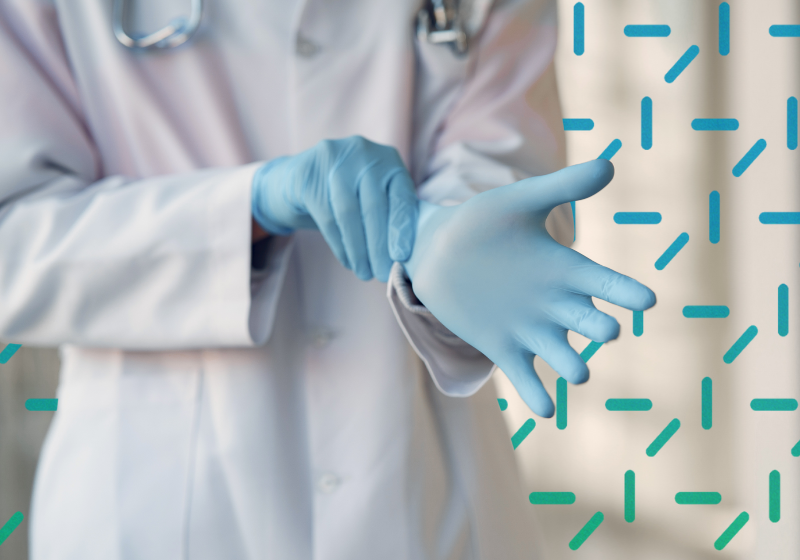The Difference Between Endotoxin and Bioburden Testing
Ensuring the quality and purity of parenterally administered pharmaceutical drugs and medical devices is a key prerequisite for patient safety and for the generation of reliable and accurate laboratory results.
Products and the raw materials used in their manufacture may be contaminated with both living microorganisms and pyrogens, the most potent among which are endotoxins.
What is the difference between bioburden and endotoxins?
The term bioburden refers to the number of viable microorganisms that are found in a product or in the environment, whereas endotoxins are lipopolysaccharide molecules that are present in the outer membrane of gram-negative bacteria and are released from them primarily during cell lysis.
Contamination of parenterally administered pharmaceutical drugs and medical devices with both living microorganisms and endotoxins can have severe consequences for human health, if the contaminants gain access to the bloodstream. For microorganisms, the effects depend on the specific characteristics of each microorganism, whereas for endotoxins, fever, inflammation, and shock may develop [1]
Principles of bioburden and endotoxin testing
Both bioburden and endotoxin testing of parenterally administered pharmaceutical drugs and medical devices — as well as the raw materials they are manufactured from — should comply with strict regulatory requirements to ensure patient safety.
Goals and methods for bioburden testing
Bioburden testing determines the total number of viable microorganisms in a product or raw material. It is generally carried out prior to sterilization and can help:
Ensuring that the pre-sterilization microbial load is within an acceptable range.
Selecting the most appropriate sterilisation method. In addition, bioburden testing can help monitor manufacturing procedures.
Traditional methods for bioburden testing are well established but are time-consuming. They include the membrane filtration method, pour plate method, and spread plate method [2].
Rapid microbial detection methods are gaining popularity but often require validation against compendial methods. They may rely on the use of a polymerase chain reaction (PCR), ATP bioluminescence, fluorescence, turbidimetry, and impedance [3].
Goals and methods for endotoxin testing
Endotoxin testing can help ensure that products and their raw materials are free of endotoxin contamination.
The Limulus Amebocyte Lysate (LAL) assay has become the gold standard for endotoxin testing and is characterised by high sensitivity and specificity. The LAL reagent is lysate derived from amebocytes from the blood of the Limulus horseshoe crab. In the presence of endotoxin, a coagulation cascade is activated, and clotting, turbidity, or color change occurs.
The LAL assay can therefore be performed as a gel-clot, turbidimetric, or chromogenic assay. In the gel-clot LAL assay, which is qualitative or semi-quantitative, a gel clot is formed if a sample contains endotoxin. In the quantitative turbidimetric LAL assay and chromogenic LAL assay, the presence of endotoxin leads to the development of turbidity and color change, respectively.
The turbidimetric and chromogenic LAL assays can be kinetic or endpoint assays. Alternative assays for endotoxin testing have also been developed.
Recombinant endotoxin assays rely on synthetic alternatives to the LAL reagent and offer a sustainable and ethical endotoxin testing solution.
In addition, the monocyte activation test (MAT) detects both endotoxin and non-endotoxin pyrogens with high sensitivity and specificity.
Significance of bioburden and endotoxin testing
Both bioburden and endotoxin testing play important and complementary roles to ensure the purity, quality, and safety of parenterally administered pharmaceutical drugs and medical devices and should be performed in accordance with strict regulatory requirements.
References
Kellum JA, Ronco C (2023). The role of endotoxin in septic shock. Crit Care, 27(1): 400.
Connors A, Degrave A (2020). QC corner: overcoming the manufacturing bottleneck caused by bioburden testing. American Pharmaceutical Review. https://www.americanpharmaceuticalreview.com/Featured-Articles/571715-Overcoming-the-manufacturing-bottleneck-caused-by-bioburden-testing/
Provenzano M, Nuñez B. (2023). Endotoxin testing and RMMs - how to improve manufacturing agility and increase efficiency. American Pharmaceutical Review. https://www.americanpharmaceuticalreview.com/Featured-Articles/609720-Endotoxin-Testing-and-RMMs-How-to-Improve-Manufacturing-Agility-and-Increase-Efficiency/
(2021). Endotoxin testing - why and how the industry seeks improvements. American Pharmaceutical Review. https://www.americanpharmaceuticalreview.com/Featured-Articles/581814-Endotoxin-Testing-Why-and-How-the-Industry-Seeks-Improvements/#:~:text=The%20industry%20seeks%20to%20improve,patients%20more%20efficiently%20and%20safely.

